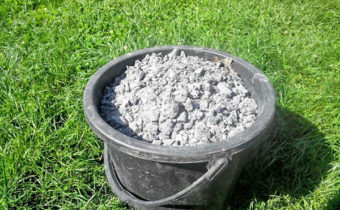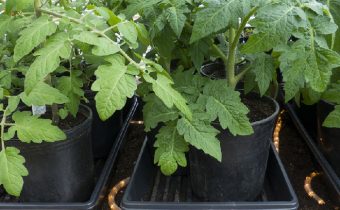Effective ways to grow tomatoes in buckets
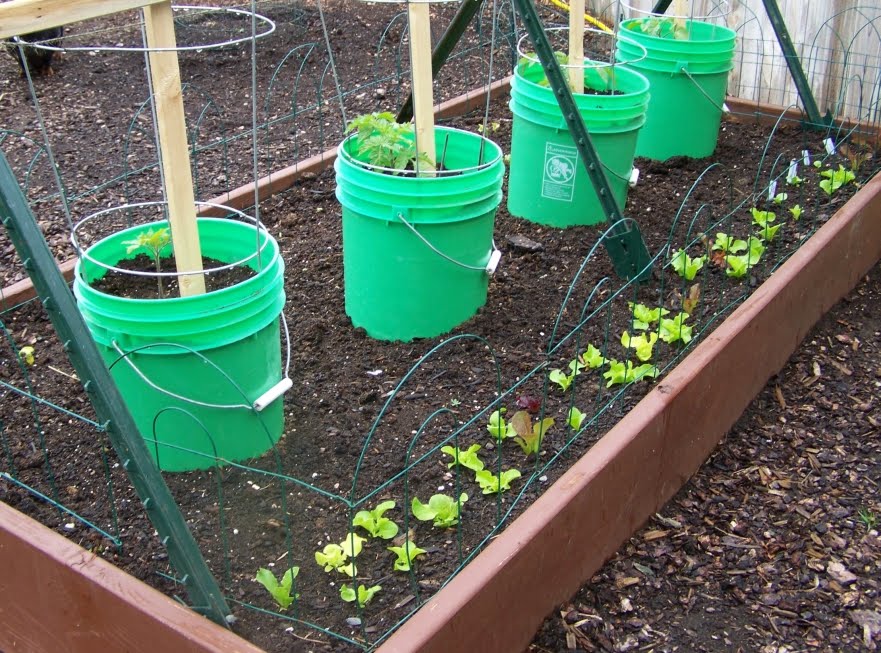
Grow a rich crop of tomatoes, and with a bright taste and a special smell, is not easy in most regions. The plant loves heat and light, demanding on the level of moisture and the length of the vegetative period. Therefore, in both closed greenhouses and in conditions of open ground, the method of planting in buckets is often used.
Various agricultural technologies allow to get an earlier harvest, to protect even weak seedlings and to simplify the care of vegetable crops.
Growing in buckets without bottom
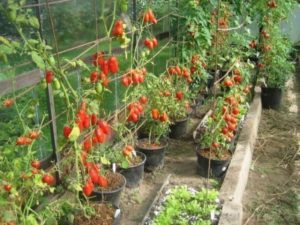
For this method, you can use the old packaging, which is no longer suitable for any other work. Tomatoes can grow in metal buckets and plastic products. It is necessary to prepare in advance the nutritional content for such a vertical “bed”. It will take about one and a half times more humus as compared to a conventional landing, it is imperative to take into account the type of initial land mixture. Each year, the ground must be replaced to prevent the appearance of fungi and bacteria in it, exhaustion.
For low-growing varieties suitable plastic buckets from under the building and finishing materials. For tall bushes, it is better to choose the usual metal options with high walls.
It is enough to prepare soil and humus back in the fall, to fall asleep in the tank in order to start planting in spring. The advantages of this method include:
- minimum costs;
- the possibility of growing in open and closed ground;
- reduced ripening time;
- the ability to optimize watering.
Open buckets are suitable for large bushes with a developed root system. Lack of bottom allows them to take root, which as a result affects the yield. Planting in open buckets makes it possible to plant shrubs much earlier even in open ground, since protection from either little cold or wind is no longer required. In such a bucket you can quickly replace the soil. The probability of plant rotting is also significantly reduced, since the excess water just goes into the ground.
Planting in buckets without a bottom allows you to get rid of the problem of cracking tomatoes and allows you to optimize the mode of irrigation. The liquid does not spread throughout the area, but is absorbed directly at the root. A limited amount of air even on cold days warms up much faster, which allows you to get the first crop 1-2 weeks earlier. Within minutes, such planting can be covered with a special non-woven fabric with the threat of frost at night in open ground. The deposited layers of cold air will not damage the leaves or the flowers.
Planting in buckets without a bottom is not suitable for those who want to grow tomatoes in their loggia or balcony. Such landings cannot be transferred, therefore it is necessary to allocate a sufficient amount of space in advance. This method is not applicable in the case when it is necessary to protect tomatoes from diseases transmitted through the soil.
Growing in solid buckets
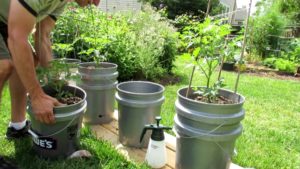
Maximum save space in the summer cottage or in the greenhouse will allow the method of planting tomatoes in solid buckets with the bottom. You can use the container with holes, which will serve as drainage holes. If they are not, you should definitely make: 5-6 pieces with a diameter of up to 4 centimeters. Vents should be made in the walls of the bucket. Thanks to this, it is possible to achieve uniform drying of the soil and saturating it with the necessary amount of oxygen.
Instead of buckets, you can use old flower pots or synthetic durable bags.
Planting in buckets with a bottom has important advantages:
- beds turn out mobile;
- You can even grow tomatoes on the balcony;
- there is a possibility of the most dense landing;
- no additional protection against diseases and pests.
This is the best option for landing including at home. It is possible to place several buckets much closer to each other than ordinary bushes on standard ridges. At the same time it is necessary to provide enhanced lighting to compensate for the density of the bushes. It is recommended to place such buckets in rooms in wooden not deaf boxes. This will ensure sufficient soil ventilation through drainage holes. For excess water from the bottom, you can provide a special pan.
Landing in a bucket does not require special care. Watering should be frequent, but moderate, top dressing recommended 3 times per season. Soil loosening is standard.
The disadvantage of this option is the impossibility of planting the most tall varieties. The larger the bush and its average yield, the more soil is needed. The likelihood of roots rotting is still preserved even if there are drainage holes, therefore, when growing by this method, it is necessary to carefully monitor the condition of the plant.
To get the best results, it is necessary to prepare the soil from compost, turf and ordinary land. Planting should not be deep, since the space for root growth is limited. When planting weak plants and young seedlings into the open ground, you can additionally cover the bucket with plastic wrap or a special covering material, creating a mini-greenhouse for each tomato bush.
Reverse germination
One of the most original ways of planting - growing in buckets or barrels upside down, that is, the bush down and root up. This method is only suitable for miniature undersized varieties.
According to the biological classification, tomatoes are berries. In natural conditions, and bushes, and shoots tend down. This is due to the effectiveness of such landings upside down.
To organize such vertical beds, it is necessary to prepare buckets with holes with a diameter of about 5 centimeters. First, hang the container on a pre-prepared support. Through the hole to stretch the root of the seedlings, leaving the entire stem outside. To fill up with soil slowly, filling first the volume at the edge, and only then filling the root part. It is not necessary to condense, it will occur gradually as it settles and during watering.
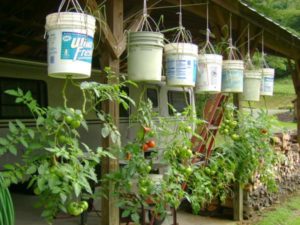
The main advantages of this landing option are:
- reduction of time spent on care;
- harvesting convenience;
- the ability to accommodate much more plants;
- lighting mode optimization.
Plants do not need to tie up and look for support, they do not need to weed. Watering to produce from above, as well as dressing, they also do not take much time. Organizing such vertical beds, you can combine several plantings at once. On the bracket - a bucket of tomatoes, greens below, for example, basil or parsley. In the "holes" themselves, you can plant decorative undersized flowers or watercress from above.
Vertical planting upside down - the best solution in the case when it is not possible to plant tomatoes in a well-lit area. If there are large plantings around, tall bushes, the plant will lack light. In the buckets on the bracket they will receive much more heat and sun, as a result, the harvest will be better.
The method also has disadvantages. With a strong overmoistening, the appearance of mold fungus is likely, moreover, the disease will develop rapidly, as the rot starts immediately from the stem. Too large tomatoes in this format can not be planted: huge fruits, most likely, just break off the branches.
Despite the long stem, sweet cherry grows well in this form. Small fruits do not pull off the branches, at the same time they are much easier to collect.
Planting tomatoes in buckets is an excellent solution for risky farming regions. Protection against low temperatures in this case becomes a simpler task. In addition, it is the best option in a limited space for organizing your own garden. The key to success will be the correct choice of varieties of tomatoes in accordance with the existing conditions and the chosen option of placement.




